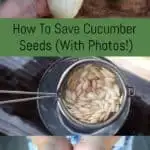
When you happen upon a cucumber, yellowing and past its prime, take it as a learning opportunity.
There are seeds inside, ready to be saved. If you only knew how!
It would be nice if it was as simple as scooping them out, washing and drying them off.
Turns out, it is a bit more complicated than that, luckily not by much.
Reasons to save your own seeds
Every gardener and homesteader knows, or will quickly find out, that cost tops the list of reasons to save their own garden seeds.
Some cucumber seed packages come with up to 10 seeds in them – an entire cucumber could have as many as 100 seeds!
Herein, lies the difference. If you are looking to expand your garden next year, saving seeds is the most cost-effective action you can take.
Saving your own seeds also helps to preserve genetic diversity, as well as feeding the bees and butterflies with a familiar pollen of yesteryear.
Once you learn how to properly save seeds, you can share them freely and spread the knowledge too.
Saving cucumber seeds: the step-by-step process
To harvest a cucumber for seeds, means that it will no longer be small and green.
The cucumber must also stay on the vine until it is past an edible stage. It will look bloated and yellow, quite unbecoming, but with a treasure inside, something like this:
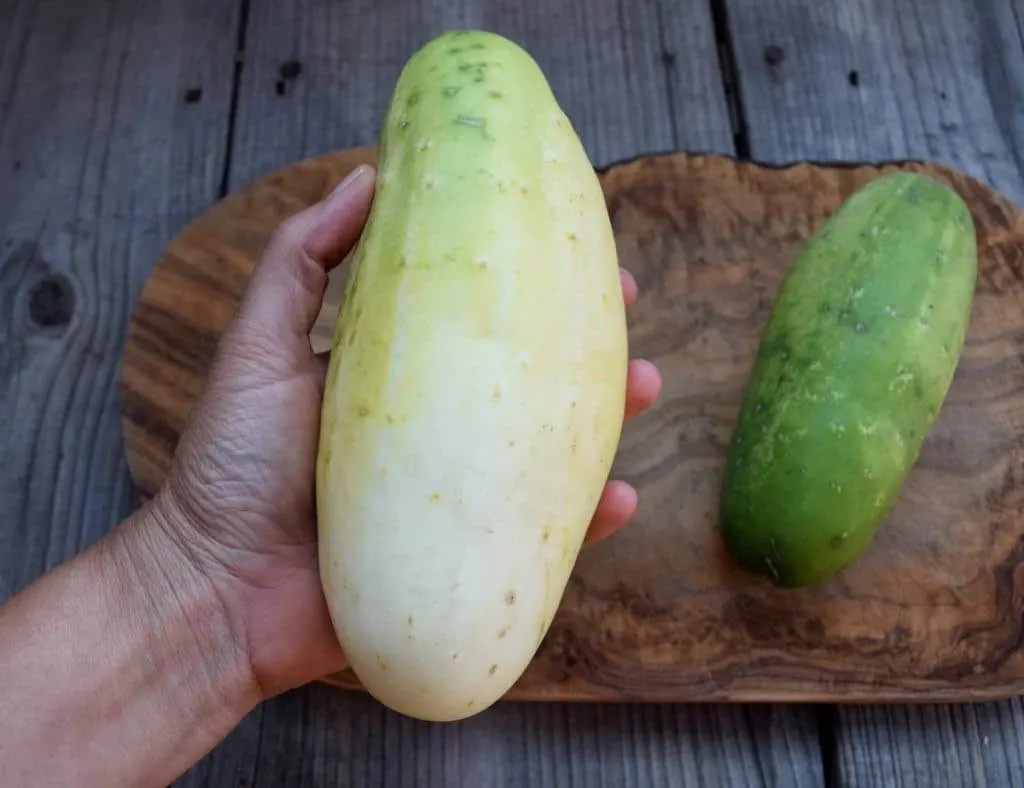
Step 1 – Harvest the overgrown cucumber and cut it in half lengthwise.
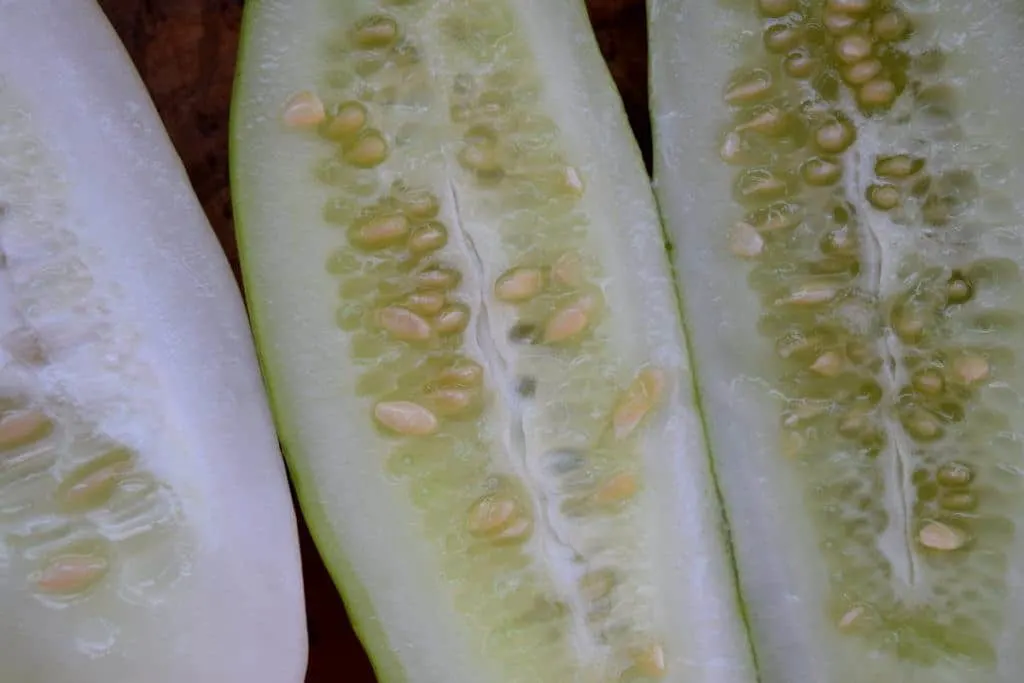
Step 2 – Scoop out the seeds with a teaspoon.
Step 3 – Place the seeds in a bowl, or jar, and cover the seeds with water.
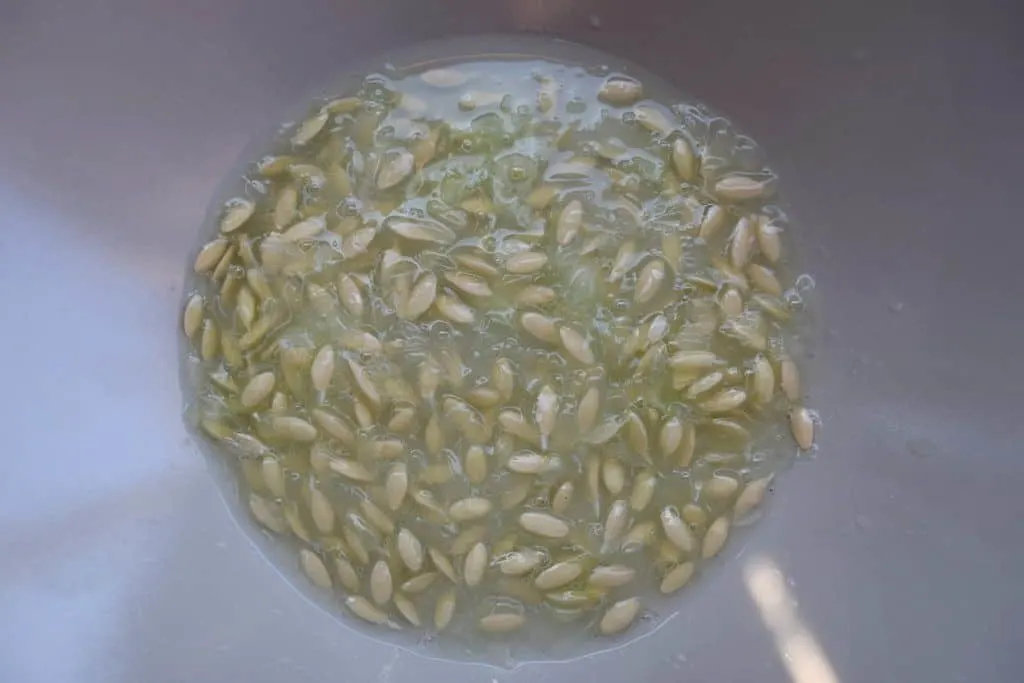
Step 4 – Set the bowl aside and leave it in a warm space – to allow fermentation to begin.
This can take anywhere from 1 to 3 days, and will smell like a gently fermenting cucumber salad.
Non-viable seeds will float to the top, the rest will sink. Leave them in the water until the pulp separates from each individual seed.
Step 5 – Strain the seeds, helping to remove any remaining viscous seed cover.
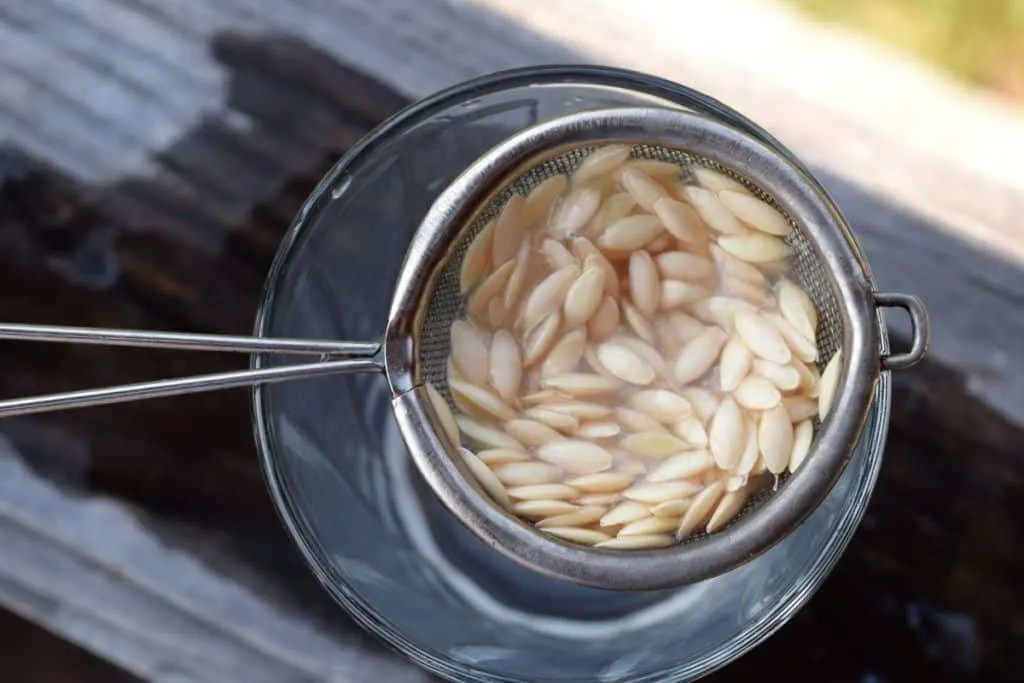
Step 6 – Place seeds on a paper towel or screen until they are thoroughly dry.
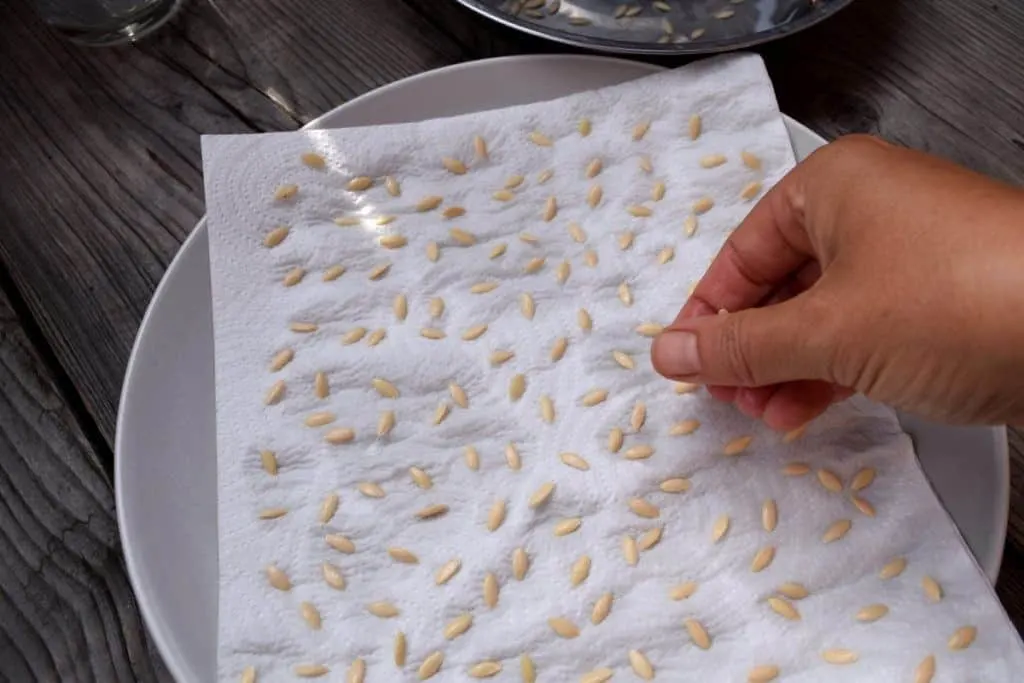
Step 7 – Label and store your saved cucumber seeds in an envelope, breathable cotton bag or a glass jar in a cool, dry place.
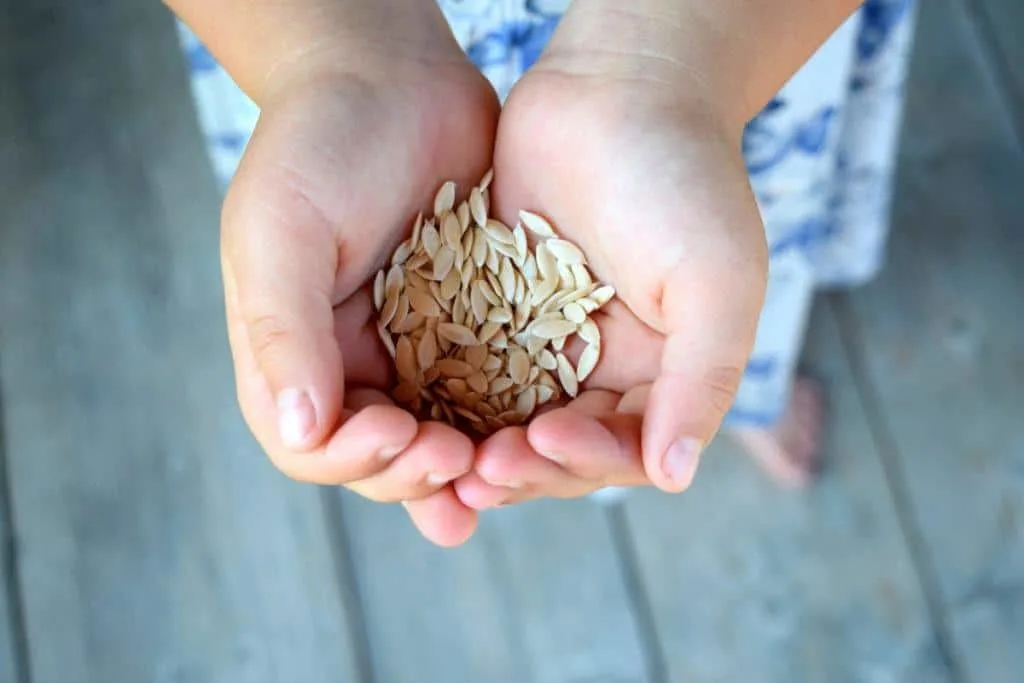
Cucumber seeds will last up to 5 years in proper storage – to be safe, plant them and save seeds again as often as possible!
Cucumber seeds you shouldn’t save
If you have done your research on open-pollinated varieties and heirlooms well ahead of planting time, you’ll know that hybrids are to be avoided if you would like to save any sort of seeds for the following garden season.
Hybrid plants are created by cross-breeding select “parent plants” with desirable characteristics.
This may make for a lovely green, uniform, well formed cucumber, but it comes with a caveat: seeds saved from hybrids are often sterile. All of your seed saving expertise will be in vain if you try to save hybrid seeds.
Even if next year’s crop emerges and turns into a similar looking cucumber, it will not be exactly the same – the original characteristics will have morphed.
Furthermore, it is useful to know that cucumbers are both wind and insect pollinated and it just so happens that cucumbers can be hand pollinated when necessary, just like squash and pumpkins.
This means that cross pollination can be an issue in a smaller garden, and definitely within an allotment or community garden.
Imagine if you were trying to grow 5 kinds of cucumbers?!
When cross-pollination occurs, know that the old wives’ tale is simply not true. Squashes and cucumbers cannot cross pollinate.
Though squashes and squashes can. Cucumbers and cucumbers too.
So, if you’d like to save your garden seeds, plan to keep different varieties of the same family apart, or isolate them during their reproductive cycle.
Also, be aware that some seeds can transmit disease. Only harvest mature seeds from the healthiest plants.
Once you have mastered the act of saving your cucumber seeds, why not move onto tomatoes. It is extremely rewarding to plant them year after year, with the same delicious results.
Here’s our tutorial for saving tomato seeds so you can try it for yourself.
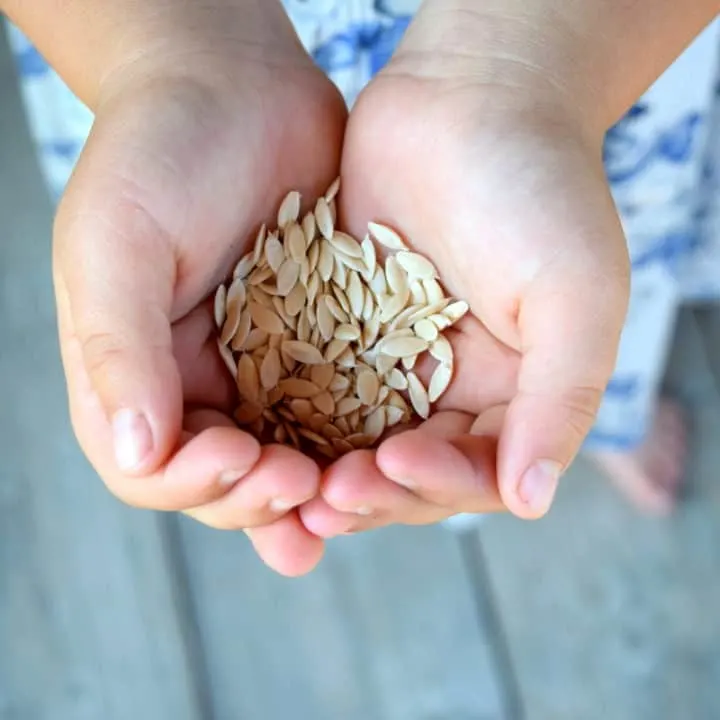
How To Save Cucumber Seeds
You can save 100+ seeds from a single cucumber ready to grow again next year. Here's how.
Materials
- - An overripe cucumber
- - Teaspoon
- - Jar or bowl
- - Fine mesh strainer
- - Paper towel
Instructions
1. Harvest the overgrown cucumber and cut it in half lengthwise.
2. Scoop out the seeds with a teaspoon.
3. Place the seeds in a bowl, or jar, and cover the seeds with water.
4. Set the bowl aside and leave it in a warm space – to allow fermentation to begin. This can take anywhere from 1 to 3 days, and will smell like a gently fermenting cucumber salad. Non-viable seeds will float to the top, the rest will sink. Leave them in the water until the pulp separates from each individual seed.
5. Strain the seeds, helping to remove any remaining viscous seed cover.
6. Place seeds on a paper towel or screen until they are thoroughly dry.
7. Label and store your saved cucumber seeds in an envelope, breathable cotton bag or a glass jar in a cool, dry place.
Pin This To Save For Later
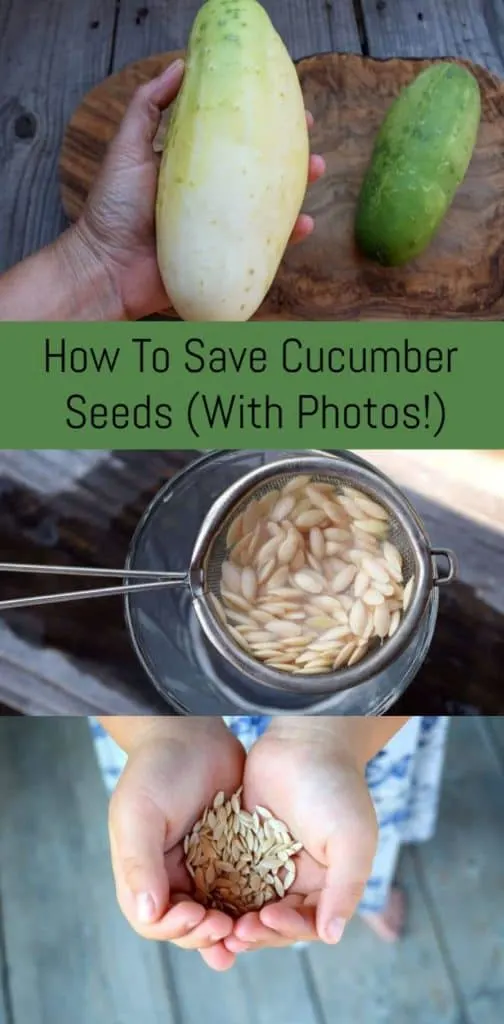

Get the famous Rural Sprout newsletter delivered to your inbox.
Including Sunday ramblings from our editor, Tracey, as well as “What’s Up Wednesday” our roundup of what’s in season and new article updates and alerts.


